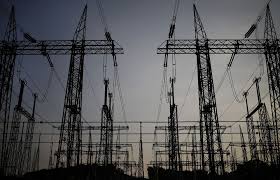
ENERGY experts on Monday said financing and the permitting process remain to be the biggest hindrances to achieving a comfortable power supply level in Luzon.
Alberto R. Dalusung III, energy transition advisor of Institute of Climate and Sustainable Cities (ICSC), said during a forum that “a mix of supply and demand actions” is the answer to a possible power crisis that is likely to happen in 2022 if no new capacity is added to the grid.
Demand, he said, can be tweaked via load curtailment and own-use generation. Supply, on the other hand, is a different issue. “You can’t just replace a coal plant with another coal plant in a year so we need to think of solutions in terms of quick to deploy power plants. Solar is the quickest to deploy,” said Dalusung.
The Department of Energy (DOE), he said, has already issued 9,000 megawatts (MW) of service contracts in Luzon.
Solar option
Though solar is not available 24 hours a day, ICSC Senior Policy Advisor Atty. Pedro Maniego Jr. said these can address the 1,700 to 1,800 MW deficit in Luzon during peak hours, which is normally from 10 a.m. to 2 p.m. when solar plants produce higher generation.
“If you have enough solar, they could be more than enough to augment the supply requirement during these times. Proponents are ready to build but the problem is funding. Our banks will not give you loans unless they have the PSA [power supply agreement] and it is difficult to get that, especially when you are just a small renewable player,” said Maniego.
Bottlenecks
Financial Futures Center founder Sara Jane Ahmed stressed the need for the country to build more capacity. “It takes a long time to build and the reason for that is not [the] actual building of it, rather, it’s the process.
So, DOE is attempting to address this. Next bottleneck is with ERC [Energy Regulatory Commission]. It’s taking a long time to approve the PSAs.” Ahmed said tpower project proponents could opt to sell their output in the spot market in the absence of a PSA.
“We have WESM [wholesale electricity spot market] where you can sell power to and we have power supply issues and if you look at how long it takes to approve a PSA, it’s likely that our installations will continue to be delayed in the foreseeable future unless something drastically changes with the regulators,” Ahmed added.
This, she added, “is where the banks can come in, the investments can come in and set up merchant power plants to deal with this scenario.” Merchant plants are power plants that sell their output to the WESM.
ERC task force
Meanwhile, ERC said Monday the task force it recently created is conducting a study on the power plant outages and resulting high prices in the WESM.
The Task Force has already identified the generation plants that will be prioritized for the conduct of technical inspection to verify the outages, including, but not limited to, the actions undertaken by the power plants to get back on line.
Also, the ongoing study focuses on analyzing the hourly market data and correlating different factors in the WESM by assessing the strong determinants of the increase in prices leading to the imposition of the Secondary Price Cap (SPC); identifying the contributors to the unutilized capacities in the market; determining the supply-demand factors leading to the diminishing supply margin; identifying the compliance of the plants to their outage reportorial compliance and the
ir reliability indices; and identifying the trading pattern in the market. With the impostion of the SPC, which is meant to mitigate sustained high prices in the WESM, average prices from May 4 to May 31, 2021 were recorded at P7,841/MWh. Without the SPC, this could have been P11,263/MWh or 44 percent higher.
“We have been monitoring the activities of the Generation Companies, especially those that underwent unplanned outages, that caused the thinning of power supply in the Luzon Grid.
This was aggravated by the increased demand for electricity due to warmer temperatures. As a consequence, there has been sustained high prices in the WESM,” said ERC Chairman Agnes VST Devanadera.
ERC sent notices of non-compliance to generation companies to explain the incurred cumulative unplanned outages beyond the maximum allowable unplanned outage days for the year 2021.
Likewise, the ERC has identified generation companies that did not comply with reporting requirements. Out of the 2,083 incidents on unplanned outages during January to April 2021, 1,288 incidents were reported. On the other hand, for the 236 incidents on the planned outages, 220 were reported. The ERC will be issuing Show Cause Orders to the power firms that did not comply with its reporting requirements.
Read full article on BusinessMirror
